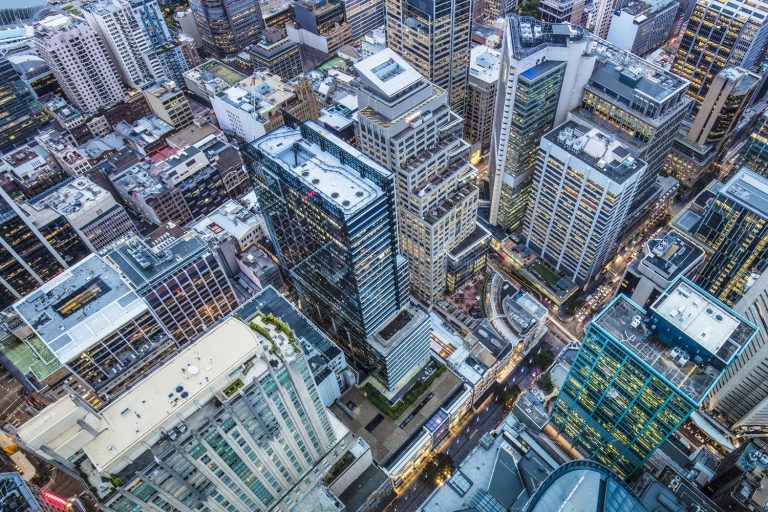Property solid amid questions over interest rates

Funds inflow to property investment will continue, underpinning solid returns in the short term.
Medium term, the major uncertainty is whether interest rates will stay low or rise.
How do we play this? The inflow of funds to commercial property investment, both directly and indirectly through listed and unlisted funds trusts, will continue.
Commercial Insights: Subscribe to receive the latest news and updates
What alternative is there? Extremely low interest rates make fixed interest unattractive, particularly for yield-seeking investors. Equity investment in companies, both directly and through the sharemarket, has greater associated risk. Property investment and infrastructure are the closest to fixed interest and offer significantly higher yields. There are risks in property, but more contained. Hence the inflow of funds to property, both directly and through REITs, and firming yields and prices underpinning returns.
Mind you, we can’t use the returns of the last decade as an indicator of future (total) returns. Both income yield and capital growth will be lower in future.
We might have lost a lot of equity in the GFC-induced correction (now just over a decade ago), but it opened the way for a decade of strong returns and buoyant property markets.
The GFC, the collapse of confidence, the extreme tightening of credit and the collapse of equity markets led to a significant over-reaction, leaving prices significantly undervalued. Yields were too low. In retrospect, that undervaluation set up an extraordinary investment opportunity underwriting a period of firming yields and capital growth as (still cautious) investors slowly returned and markets recovered.
On top of that, the monetary stimulus designed to protect economies from the worst of the recessions that followed the GFC led to significant falls in policy interest rates and bond rates, with the resultant (further) firming of property yields augmenting capital growth and total returns.
Indeed, most of the growth in property prices has been associated with firming yields rather than rising incomes.

The last decade has seen extraordinary returns for property investment. But now, property markets are no longer so undervalued. That source of capital growth has largely evaporated.
Meanwhile, there is considerable uncertainty about the course of interest rates and bond rates — not in the short term, but in the medium term.
There are two major drivers of total returns.
● The first is through the investment market with the influence of changing bond rates on yields and hence capital growth.
● The second is the cyclical influence of demand/supply on rental and income growth. That determines capital growth directly (at a fixed yield) and indirectly through the influence of changed expectations of capital gain on yields and hence prices.
We need to take both into account. But the first has been the major driver of total returns over the last decade, and that’s my focus in this article.
The influence of bond rates on yields is an investment market phenomenon affecting all property markets. We can identify a significant independent influence of bond rates in yield formation, with different elasticities market by market.
In the short term, interest rates and bond rates are likely to stay low. Indeed, they could fall further, though substantially less than they have fallen so far in the post-GFC period. While ever interest rates stay low, funds will continue to flow into property, both directly and indirectly, leading to further firming of yields. The way that works in yield formation is that yields slowly adjust to the level of interest rates. They haven’t fully adjusted yet. Yields (and prices) have further to firm if interest rates stay at current levels. Total returns to property from this source will continue to augment income yields with capital growth. But yields won’t firm by as much as in the last decade. Returns will be lower.

My major uncertainty is about the course of bond rates, and hence property yields, in the medium term. Some commentators appear to believe interest rates will remain low indefinitely. Implicitly, that means continued weakness and low inflation in developed economies allowing continued monetary stimulus. That would keep both interest rates and property yields low.
That’s possible. But I’m not so sure. And I’m not prepared to invest on that basis.
A lot of this depends on whether you think something has fundamentally changed in the world economy, that growth will remain weak and inflation contained. I don’t.
Remember how long it takes for economies to recover from a major shock like the GFC. In Australia, it took more than a decade after the early 1990s recession to get to the stage where we were investing again. That’s what’s happening in world economies. My reading of the situation is that the US economy is doing fine. But Europe is still struggling — no longer enduring rolling recessions, but remaining weak. It’s just taking a long time to recover from the GFC.
I think the weakness of wages growth is a temporary phenomenon. It’s certainly possible that new working arrangements, particularly contract labour and part-time jobs, have shifted the balance of power towards employers. And in our weak economy the labour market remains weak. But once labour shortages emerge, employers will again bid up wages in order to get good staff, once again leading to rising wages and hence price inflation. And then central banks, including Australia’s RBA, will again tighten monetary policy.
In my opinion, policy interest rates and bond rates won’t stay low forever.
How do we play this situation? In the short term, I’m comfortable in the expectation of continued firm yields and solid returns to property investment, better than many corporate equity positions and with lower risk in the form of volatility of return between individual assets. That allows a focus on investment in property markets with cyclical strength.
Mind you, all markets will be affected by rising bond rates. Returns will be lower across the board. There’ll be no place to hide. Maybe we should just stick to minimising the damage by focusing on strong cyclical markets.
Frank Gelber is an economist.
This article originally appeared on www.theaustralian.com.au/property.







